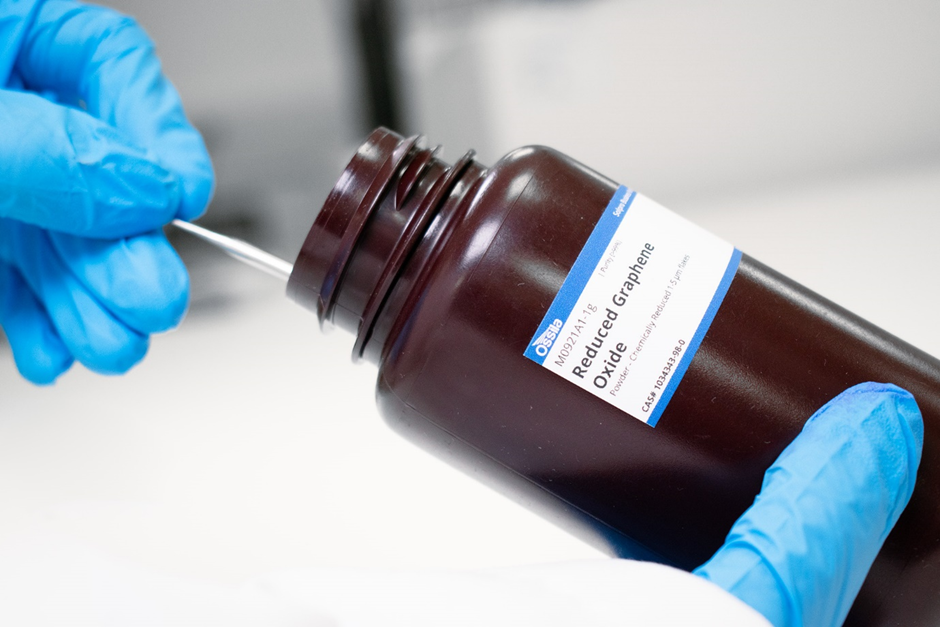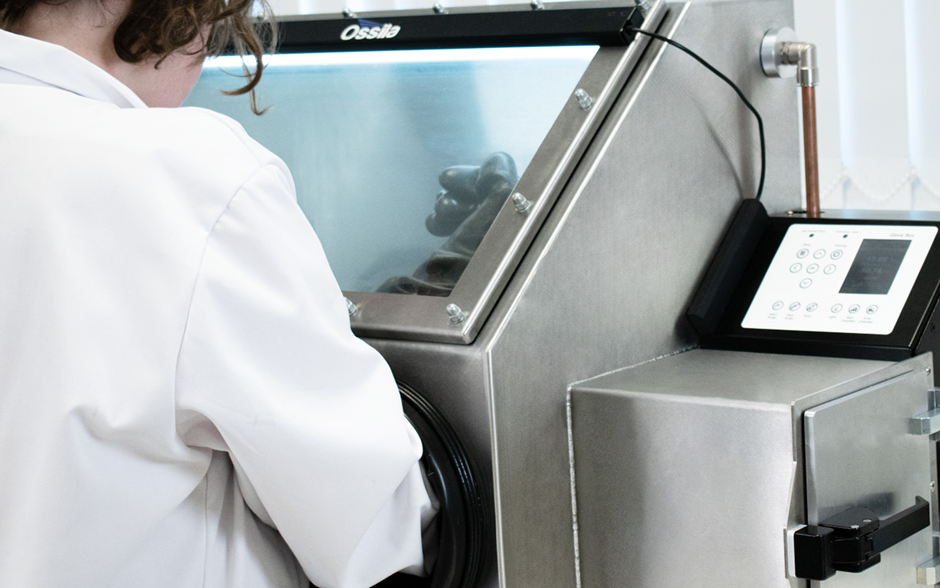Sponsored by Ossila LtdReviewed by Olivia FrostOct 11 2024
As the global demand for efficient and high-capacity energy storage solutions continues to rise, researchers are turning to advanced materials to revolutionize battery technology. Carbon-based nanomaterials have shown exceptional promise in enhancing the performance of next-generation batteries.

Image Credit: sommart sombutwanitkul/Shutterstock.com
Beyond traditional graphene, a diverse range of carbon derivatives—including holey graphene, graphene oxide, reduced graphene oxide, carbon nanotubes, and doped graphene—are being explored for their unique properties. However, structural advancements to enhance these properties have come at a cost. Graphene derivatives are particularly sensitive to air, especially moisture and oxygen, which poses significant challenges.
The Potential of Carbon-Based Nanomaterials
Holey Graphene
Holey graphene is characterized by nanoscale holes in its structure, which enhance ion transport. Used in both the anode and cathode of batteries, holey graphene facilitates faster charging times and greater energy storage capacity. The holes in the graphene layers reduce the path length for ion diffusion, allowing for more efficient charge/discharge cycles.
Graphene Oxide
Graphene oxide (GO), with its oxygen-containing functional groups, is highly dispersible in solutions and easy to process in large quantities. The functional groups contribute to improved ion absorption, so GO has been effectively used in cathodes to enhance the overall energy storage capability.
Reduced Graphene Oxide
Reduced graphene oxide (rGO) is produced by chemically reducing GO, resulting in fewer defects and functional groups. This process restores some of the electrical conductivity lost in GO while improving stability. The enhanced conductivity of rGO, along with the reduced defect density, make it suitable for use in cathode applications.

Image Credit: Ossila Ltd
Carbon Nanotubes
Carbon nanotubes are tubular structures with diameters in the nanometre range. They are excellent conductors of electricity and provide mechanical strength to battery electrodes. Carbon nanotubes act as regulators in lithium-ion batteries, improving storage behavior and reducing defect formation.
Doped Graphene Oxide
Doping graphene oxide with elements like nitrogen or boron can significantly alter its properties, making it more suitable for specific battery applications.
- N-doped graphene oxide: Nitrogen doping can repair defects in GO, improving its electronic properties and enhancing its performance as an anode material. N-doped GO has shown promise in increasing the efficiency and stability of lithium-ion batteries.
- B-doped graphene oxide: Boron doping increases the capacity of GO and enhances its stability. This makes B-doped GO an effective anode material for alternative battery chemistries, such as potassium-ion batteries.
Challenges of Air Sensitivity
Pristine graphene is relatively stable in the air but can slowly oxidize when exposed for extended periods or at high temperatures. Derivatives such as holey graphene, GO, and rGO are more sensitive to air, particularly to moisture and oxygen. Their functional groups and defects make them more prone to degradation, leading to various stability issues.
Oxidation
Exposure to oxygen can lead to the formation of oxide species on the surface of these nanomaterials, reducing their electrical conductivity and altering their chemical structure. This is particularly problematic for graphene derivatives and nanotubes, where high conductivity is essential.
Moisture Absorption
Many of these materials, like GO and doped graphene, are hygroscopic. They can absorb water, which can cause swelling, delamination, or even chemical reactions that degrade their properties. This moisture sensitivity can lead to reduced cycle life, increased internal resistance, and overall performance degradation in batteries.
Structural Degradation
Reactions with moisture and oxygen can significantly change the structure of these materials, leading to a loss of mechanical strength and stability. This can be particularly detrimental in applications where structural integrity is crucial, such as flexible or wearable electronics.
Overcoming Air Sensitivity
Several strategies can be employed to mitigate their air sensitivity and fully realize the potential of carbon-based nanomaterials in battery applications.
Protective Coatings and Encapsulation
Protective coatings, such as polymers, ceramics, or additional carbon layers, can shield these nanomaterials from direct exposure to moisture and oxygen. Encapsulation within a composite matrix can provide an additional barrier, maintaining the integrity and performance of the material over time.
Controlled Environment Synthesis and Handling
These materials should be synthesized and handled in controlled environments, such as a glove box filled with inert gases like argon or nitrogen. This prevents contamination during manufacturing and ensures that the materials retain their desirable properties.

Image Credit: Ossila Ltd
Surface Functionalization
Surface functionalization involves modifying the material's surface with stable chemical groups that can reduce reactivity with air. For instance, functionalizing graphene oxide with hydrophobic groups can make it less sensitive to moisture, improving its stability in battery applications.
Solid Electrolytes
Replacing liquid electrolytes with solid-state electrolytes can significantly reduce the interaction of sensitive nanomaterials with moisture and oxygen. Solid electrolytes provide a stable interface, enhancing the overall safety and longevity of the battery.
Advanced Packaging and Sealing
For commercial applications, advanced packaging techniques like hermetic sealing and multi-layer barrier films can protect these nanomaterials from environmental exposure. Such packaging solutions can ensure the long-term stability and performance of batteries that include air-sensitive materials.
The Next Generation of Batteries
A range of carbon-based nanomaterials hold great promise for enhancing the performance of next-generation batteries. Their unique properties—high conductivity, fast ion transport, and enhanced capacity—make them ideal candidates for advanced energy storage applications. Yet, their sensitivity to air remains a significant challenge. By implementing strategies such as protective coatings, controlled environment synthesis, and advanced packaging, we can overcome these challenges and unlock the full potential of these materials. As research progresses, these innovative solutions will pave the way for more efficient, stable, and high-capacity batteries that meet the growing demands of modern energy storage.

This information has been sourced, reviewed and adapted from materials provided by Ossila Ltd.
For more information on this source, please visit Ossila Ltd.